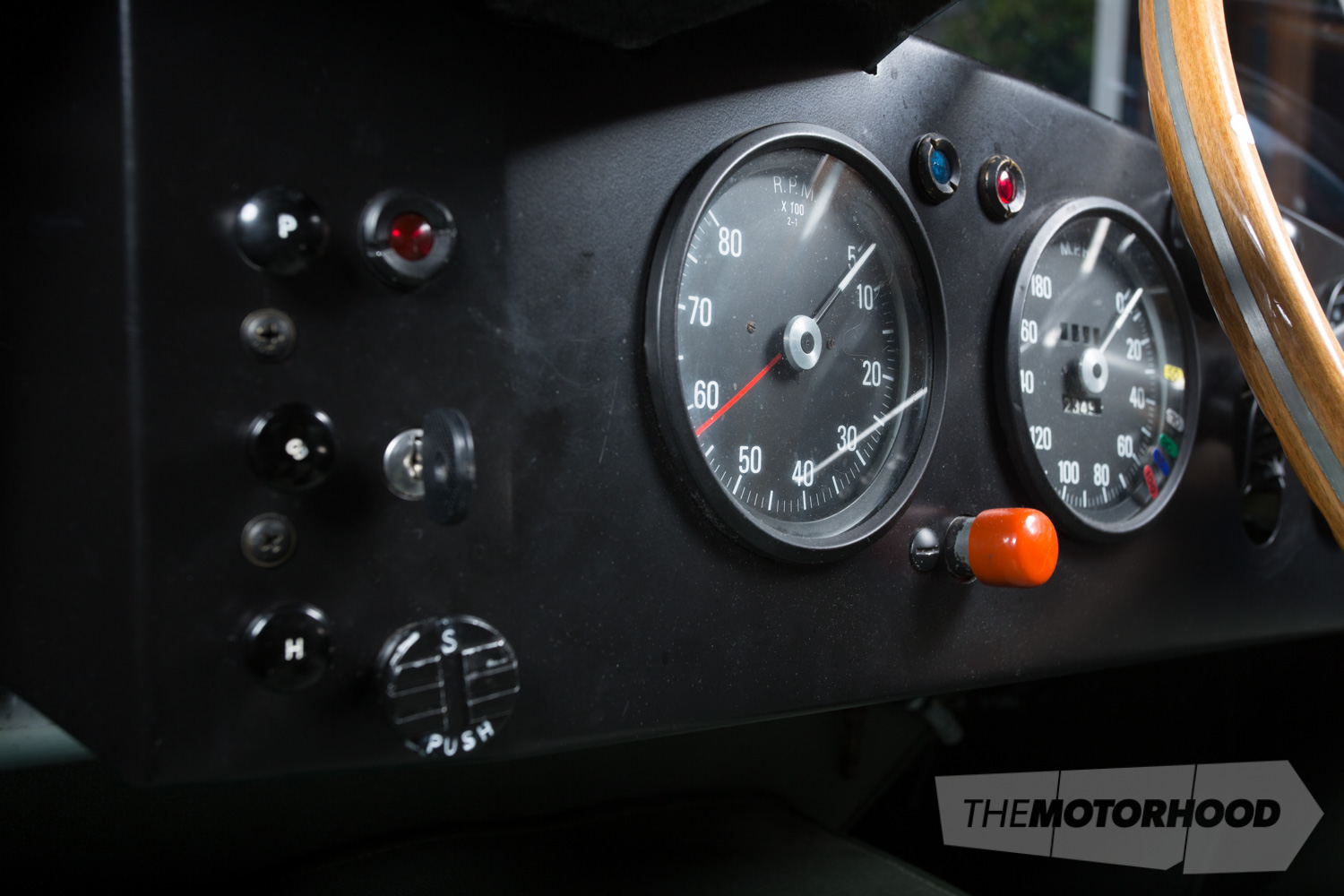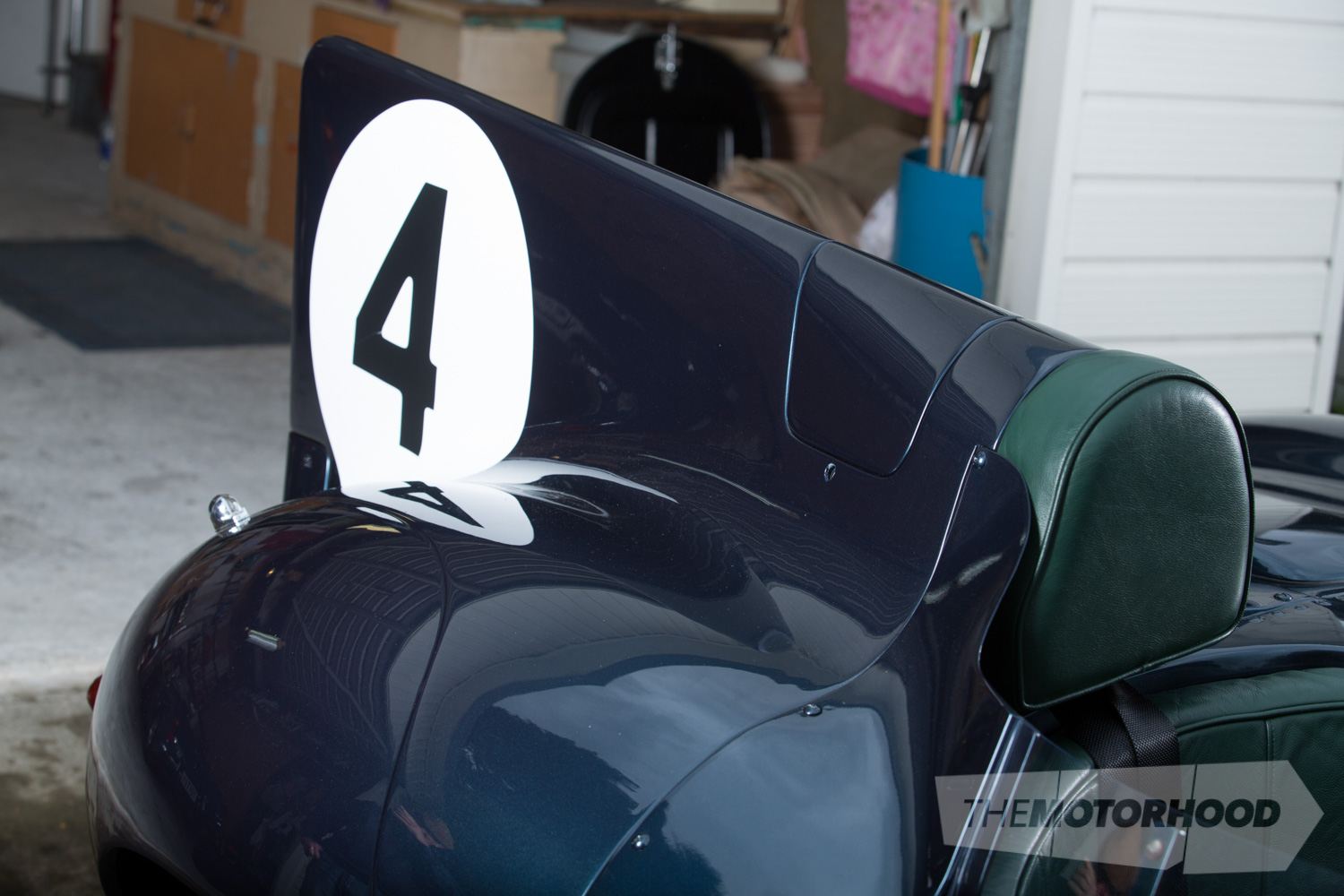Larry Price still clearly remembers the excitement he felt as he heard the news — live — of the D-Type Jaguar crossing the finishing line in second place during 1954.
Fast forward three-plus decades, and, right from the start, Larry has done his best to replicate the ’56 and ’57 long-nose winning cars. Although he knew his car would never be an exact replica, he enjoyed doing the research and building details that were non-functional facsimiles, such as the wiring and fuse boxes in the passenger compartment.

The car was finally painted in colours as close to the Le Mans car as possible, and the number four is a nod to the Ecurie Ecosse car number that crossed the line in 1956, driven by Ron Flockhart and Ninian Sanderson. The single stripe across the nose was also on the original car, and represented the fact that it was the Ecurie Ecosse number one car.
We’ve put together a gallery for you to get a sneak peek at what makes Larry’s car so special:
Check out our full story in the November issue of New Zealand Classic Car (Issue No. 311).












